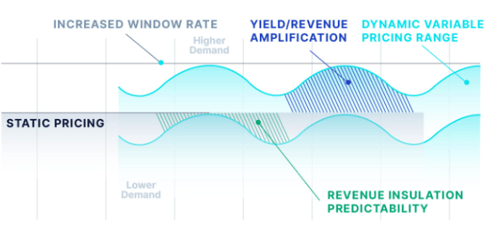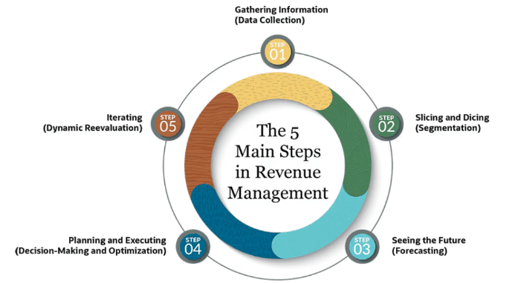OEMs are constantly seeking innovative strategies to stay ahead. One such cutting-edge approach gaining momentum is dynamic price management. In this article, we'll delve into the intricacies of dynamic price management, exploring its significance, implementation, and the benefits it offers to businesses worldwide.
Understanding Dynamic Price Management
Dynamic price management refers to the strategic adjustment of prices based on various internal and external factors in real-time. For Original Equipment Manufacturers (OEMs), this approach holds immense importance as it enables them to optimize pricing strategies dynamically, ensuring competitiveness and profitability in an ever-evolving market.
Dynamic Pricing Explained
At the core of dynamic price management lies dynamic pricing, a concept where prices fluctuate in response to changes in demand, competition, and other market variables. It comes down to setting the right price at the right time to maximize revenue and customer satisfaction.
Dynamic Pricing vs. Static Pricing
A crucial aspect to understand is the difference between dynamic and static pricing strategies. While static pricing involves setting fixed prices over an extended period, dynamic pricing adapts to real-time market conditions, allowing businesses to capitalize on opportunities and mitigate risks more effectively.

Overview of Dynamic Revenue Management
Dynamic revenue management is a versatile strategy employed across various sectors beyond manufacturing, including hospitality, airlines, car rentals, and retail. Let's delve into the intricacies of this practice.
What is Dynamic Revenue Management?
Dynamic revenue management epitomizes the acute strategy of arranging pricing and inventory dynamics to optimize revenue generation. By leveraging advanced analytics, real-time data, and forecasting techniques, OEMs can dynamically adjust prices and distribution channels to maximize revenue and profitability. This enables them to effectively manage inventory levels, mitigate risks associated with demand variability, and capitalize on opportunities for revenue growth.
The overarching goal is to align product offerings with customer needs, timing, and value, thus enabling businesses to enhance profitability and maintain competitiveness within their industry.

Role of Data Analytics in Revenue Management
Data analytics transforms revenue management by providing revenue managers with advanced tools to analyze vast amounts of data and extract valuable insights. Here’s how data analytics can contribute to improving revenue management:
-
Dynamic Pricing Optimization: Dynamic pricing involves adjusting prices in real-time based on factors like demand, competition, and even customer behavior. Data analytics enables pricing managers to monitor these factors closely and fine-tune pricing strategies to capture the maximum value from each customer segment.
-
Competitor Analysis: Staying competitive in the market requires monitoring competitors’ pricing strategies and market positioning. Data analytics tools can gather and analyze competitor data, enabling revenue managers to make informed decisions about adjusting their own pricing strategies.
-
Real-time Insights: Traditional revenue management often relied on historical data, making it challenging to respond quickly to changing market conditions. Data analytics and intelligent tools, like MARKT-PILOT's PRICEGUIDE provides real-time insights, enabling pricing managers to adapt strategies promptly to capitalize on emerging opportunities or mitigate risks.
Data analytics revolutionizes revenue management, informing pricing, forecasting, and optimization. Utilizing real-time insights and predictive analytics allows pricing managers to drive growth and customer loyalty with personalized pricing strategies.
Crafting a Global Pricing Strategy
In today's interconnected world, businesses often operate across multiple markets, making it imperative to adopt a global pricing strategy. Dynamic price management plays a pivotal role in this regard, enabling businesses to synchronize pricing strategies across diverse regions while accounting for local nuances and competitive dynamics. Implementing dynamic pricing on a global scale requires careful planning and execution, but the rewards in terms of increased revenue and market share are substantial.
Best Practices for Implementing Dynamic Pricing on a Global Scale
By adhering to these best practices tailored to OEMs, businesses can effectively navigate the complexities of implementing dynamic pricing on a global scale, driving sustainable revenue growth, and competitive advantage in diverse markets.
-
Market Segmentation and Analysis: Segment global markets based on demographics, behavior, and competition. Analyze local dynamics to tailor pricing strategies effectively.
-
Real-time Data Integration: Integrate real-time market data for informed pricing decisions. Utilize advanced analytics to adjust prices promptly based on market changes.
-
Localized Pricing Optimization: Optimize pricing for local factors like currency, taxes, and regulations. Implement dynamic pricing algorithms to stay competitive and maximize profitability in each market.
Key Elements of Good Dynamic Price Management
Training and Educating Staff on the Principles and Execution of Dynamic Price Management:
Comprehensive Training:
Provide thorough training programs to ensure all staff members understand the principles and intricacies of dynamic price management.
Continuous Education:
Foster a continuous learning and development culture to keep employees updated on evolving market trends and best practices in pricing strategy execution.
Integrating Dynamic Pricing Software and Tools:
Implementation of Advanced Tools:
Invest in cutting-edge dynamic pricing software and tools, such as PRICERADAR, to streamline pricing processes and enhance decision-making capabilities.
Integration and Customization:
Ensure seamless integration of dynamic pricing tools into existing systems and workflows, and customize them to suit the specific needs and objectives of your business.
Dynamic price management represents a paradigm shift in pricing strategy, offering businesses unprecedented agility and responsiveness in today's dynamic market environment. By embracing dynamic pricing and adopting a global pricing strategy, businesses can unlock new avenues for growth, profitability, and competitive advantage. Remember, mastering dynamic price management is not just about what you price, but how and when you do it.
Stay tuned for more insights and tips on navigating the evolving landscape of pricing dynamics.
